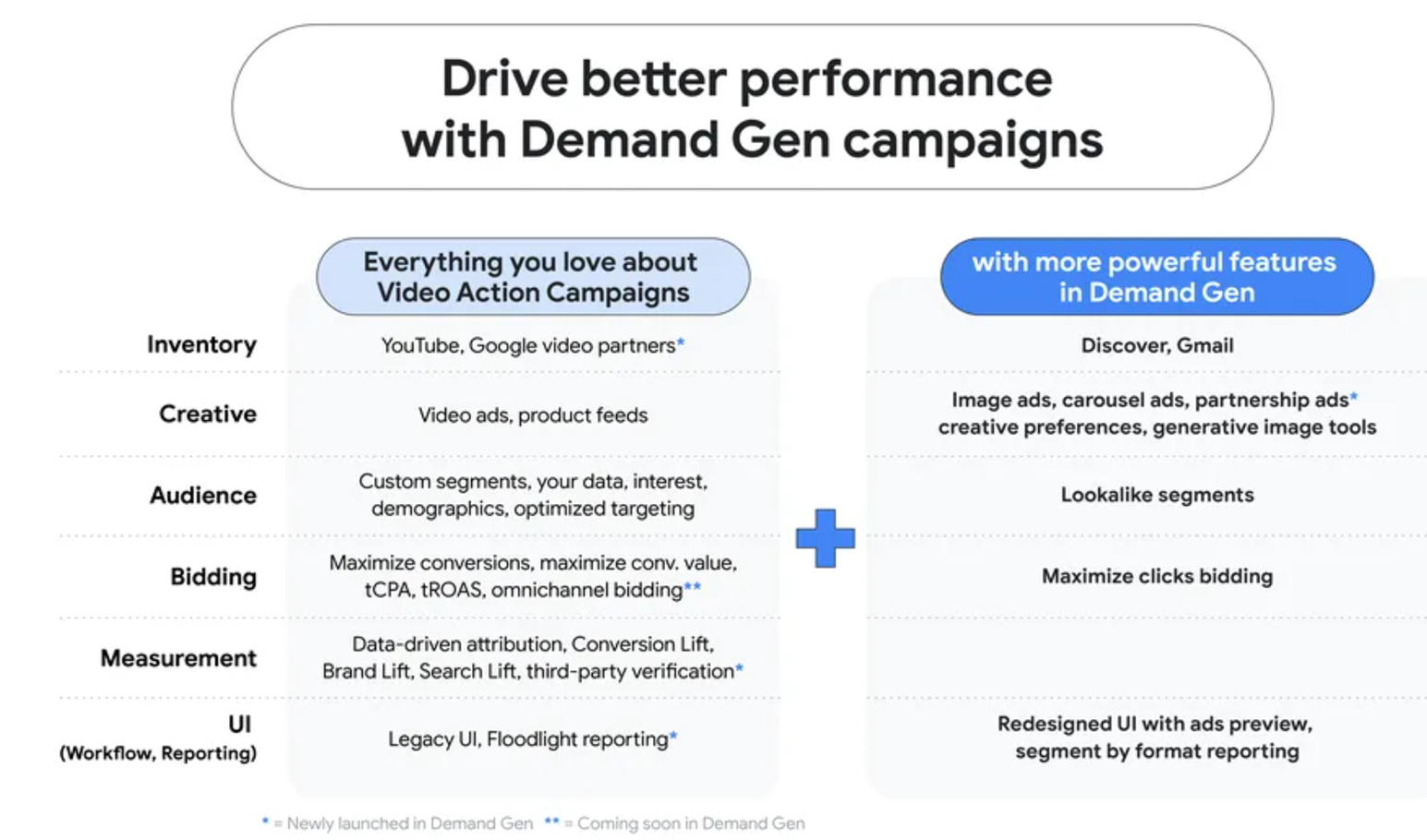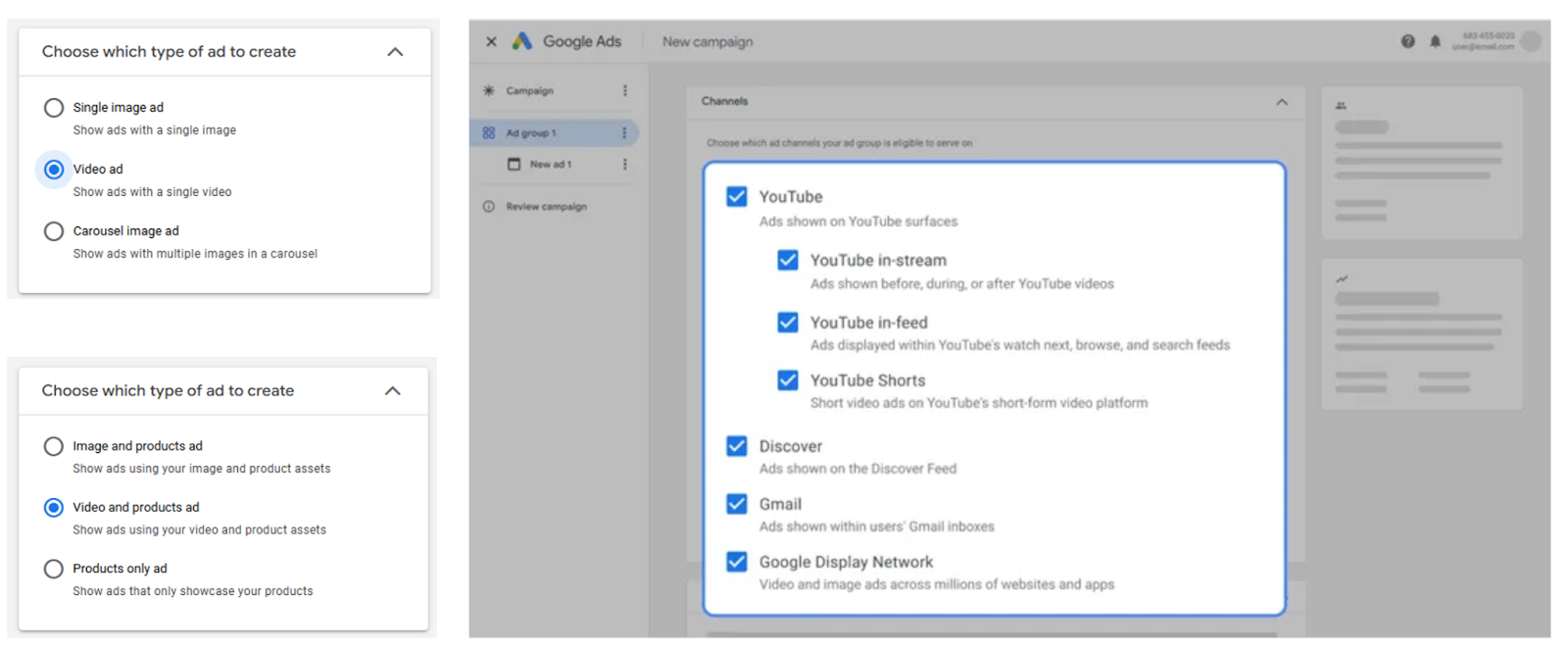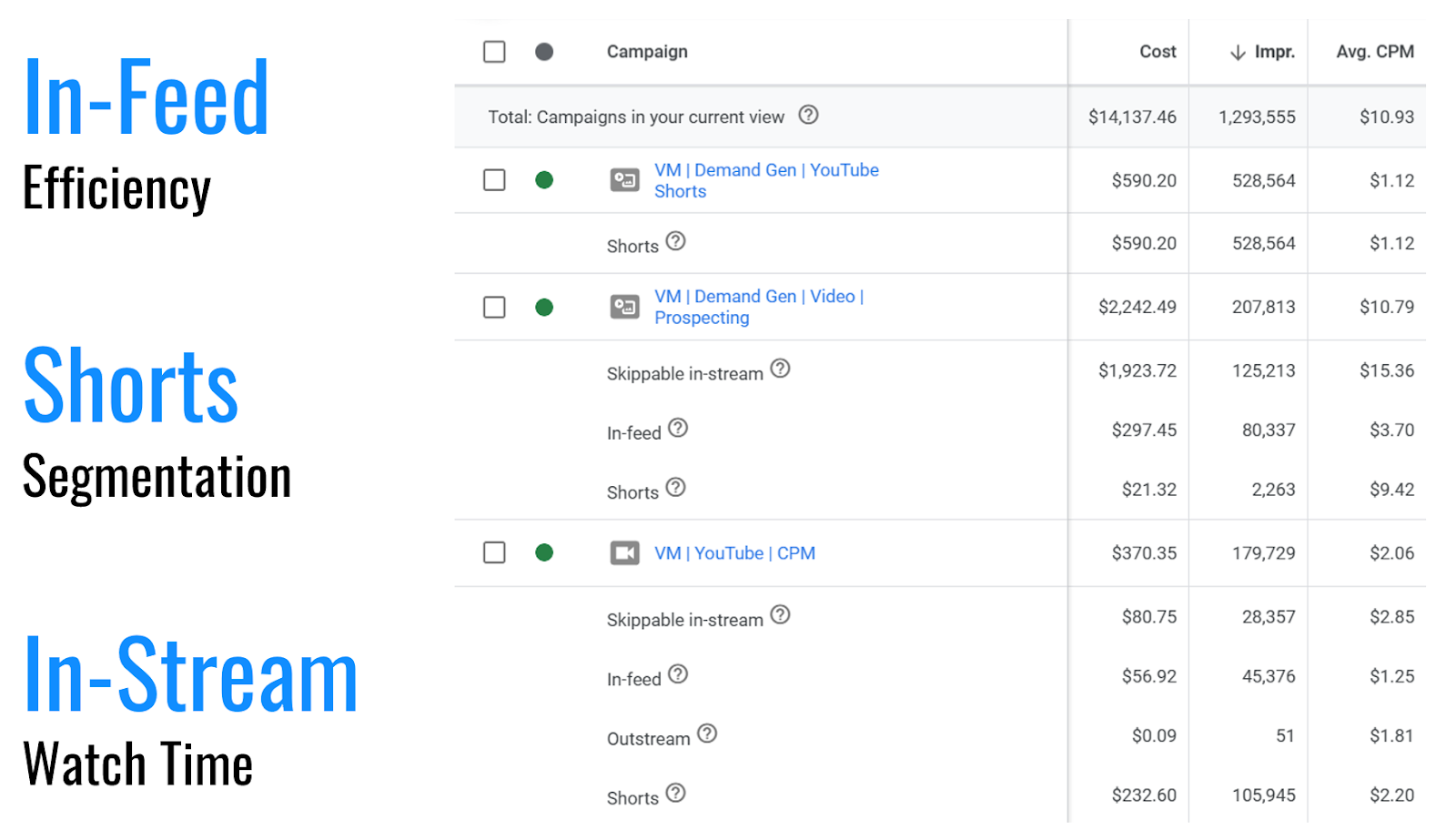Demand Gen vs Video Action: What's Different, What's Better, and How to Adapt
The newest innovation to YouTube advertising is fixing problems that have plagued video campaigns for years.
Demand Gen is Google's newest innovation to YouTube advertising, but this ain’t another campaign type update.
After testing across 20+ brands (and a lover of segmenting) new Demand Gen features center on three key areas:
- Connection to the product feed
- Placement segmentation
- Ad type segmentation
This advancement is not a direct replacement but more of an evolution within the platform, similar to Performance Max. It’s way to combine multiple ad types and placements with the promise of finding the right user at the right time. While Demand Gen is still in its infancy, it comes with relevant new strategies for video that advertisers need to jump on.
Let’s dive into each one so you can start adapting to these changes.
- Product Feed Integration Changes Everything for E-commerce
Many e-commerce brands are looking for seamless shopping experiences in 2025.
Now, with the ability to add the product feed to conversion video campaigns, customers can scroll through products within Shorts and In-Stream placements.
On In-Stream, products can rotate below the video and create an advertisement that’s not just a clickable card placement. The products remain below the video from the start and are easily clickable to the brand's website - an advantage for e-commerce we have not seen before.
Shorts has the most to gain from this innovation due to the cost efficiency of this ad type. Attention real estate is maximized with vertical, share of voice content, with products scrollable across the bottom, linking directly to the website product page.
Unfortunately, Shorts + product feed placement doesn't necessarily drive the type of engagement we find within In-Feed or In-Stream. However, the belief is that every impression counts, especially with 100% share of voice, different from In-Stream, where you compete with recommended videos, titles, descriptions, and other viewable elements.
If you lean into this strategy, make sure to hit it from a retargeting perspective, where a user has either been to the product page or engaged with the brand prior. For e-commerce brands, the clickable product integration represents a major opportunity.

- YouTube Segmentation Finally Gives Advertisers Control
One of the biggest advancements is the ability to segment to YouTube-only inventory.
Prior to Demand Gen within Video Action campaigns, advertisers were forced into the Display Network for video, allowing Google Ads to control how much spend went to the Display Network versus YouTube.
This wasn’t ideal for most advertisers.
But now, we can segment out Discover and Gmail in addition to the Google Display Network, allowing advertisers to sit in the driver's seat.
When we layer in the product feed, we can segment:
- YouTube + product feed
- YouTube without product feed
All to test how each performs. What we're finding in our initial results against retargeting audiences is that when we remove the product feed, our CPMs are lower and we end up with fewer clicks and conversions but longer watch times.
When we layer retargeting into this test, we're potentially seeing the power of product plus video having more direct action versus just video creating more intent with longer watch times. This could change the way we create product-focused video content.

- Ad Type Segmentation Transforms Creative Strategy
Now for the home run: we can now segment between In-Stream, In-Feed, and Shorts. This allows advertisers the ability to isolate one of these placements and layer on targeting, product or no product, and focus the inventory to YouTube-only.
This is important to brands for a few reasons:
Reason #1: In-Feed for Inspiration.
As a user scrolls, this ad unit is not being played before specific content a user has chosen. Users are in exploration mode, looking for a video to engage with. The video and thumbnail must drive immediate interest and lead users to engage more than In-Stream or Shorts ads.
Reason #2: Shorts for Entertainment and UGC.
This ad type, because of our experience with other platforms like Reels, Stories, and TikTok, is most impactful when quick, fast, and entertaining. Content performs best when it’s lo-fi and user-generated versus polished and highly produced. Building for what potential purchasers are interacting with and motivated by is key to driving engagement, interest, and intent.
Reason #3: In-Stream for Education.
In-Stream can be impactful across various content types, but is most impactful for education due to a user's willingness to maintain engagement for longer periods. In-Stream is YouTube's longest-running ad placement, helping build many brands not through quick videos but longer-form, highly produced videos that have impact not seen through metrics like clicks and conversions but through views, view rate, and completion rate.
The ability to segment and run specific videos in this placement on YouTube with or without product across any specific device, potentially TV-only, allows for a new level of reach toward conversion audiences (big win here).
Another important innovation not talked about in YouTube advertising or Google Ads is the ability to boost video content through YouTube Studio and its ability to access Demand Gen campaigns. This is something we're testing closely because results are much different from going directly through the Google Ads interface.

Early Results and Adaptation Strategies
We are still in the early days of Demand Gen. We can see the differences, we understand what's better, but I'm not seeing much that's worse except for the fact that this new product is not producing the level of conversions I would love to see from a conversion video campaign.
The best way to adapt is to test.
Test all placements together, segmenting them and layering in product feeds where necessary. The results continue to be preliminary across the 20+ brands currently live.
The Future of YouTube Advertising
YouTube is taking off and now's your chance to hop on board.
As more creators develop content, we see Google Ads putting massive focus on their YouTube ads product, helping brands test and innovate in this space.
My recommendation for any brand is to focus on YouTube. When you win on YouTube, you have the best chance of winning (or placing very high) in your advertising category.
